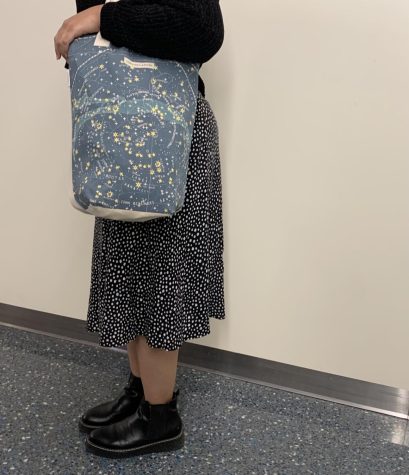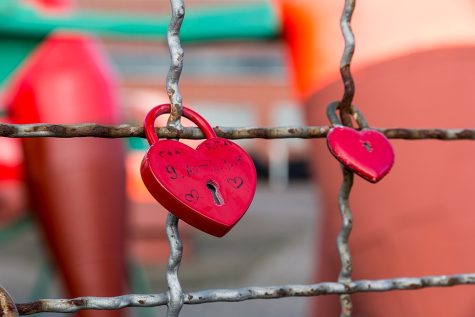“Massachusetts 2050: A Warming State” Suggestions for better fashion habits
In a consumer driven economy, can the decisions made at the mall impact our environment?
Editor’s Note: Amherst Wire is launching a new series, “Massachusetts 2050: A Warming State” to investigate the effects of climate change in our communities and how our state is responding to its imminent impact. The series is targeted to ask specific, in-depth questions on what climate change looks like now and will look like in the future, and the hope there is if a change is instilled amongst the public. This series began production a little over a year ago but was interrupted due to the COVID-19 pandemic and due to this, it contains initial contributions from some of the Amherst Wire alumni.
Consider these two shirts.
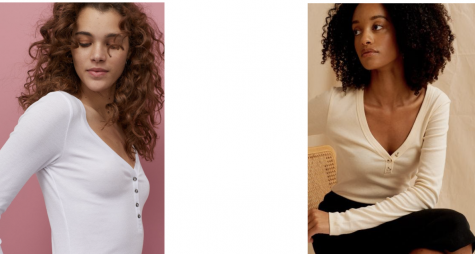
While the H&M shirt on the left is just $15, we know the company is one of the largest producers of the unsustainable fast fashion industry. It promotes ‘disposable’ fashion and has a constant rotation of new trends that then end up in landfills, which has a large environmental impact.
The short on the right however is $20 more, yet the shirt from the brand Kotn focuses on transparency and sustainability. Their traceability page focuses on giving consumers what they have started to demand-specific locations of farms and factories, as well as an assurance that their fabric is made using ethical practices and with the environment in mind.
Unlike the sustainability pages of many other fashion brands, they don’t promise to fix their practices by a certain year–they are utilizing those practices now.
While the fast fashion industry has only continued to grow over the last several years, Thomas reports that it isn’t too late. The reporter has been making her way around the globe speaking to designers, scientists and activists to help with paths forward, whether that be “breakthroughs in fiber-recycling technology, cruelty-free lab-grown materials, hyper-local manufacturing, or alternative retail platforms such as resale and rental,” according to a 2019 article with Vox.
There are also steps we can take on the individual level.
Kaley Davis, a junior Natural Resource Conservation major, said she has a very close relationship with the environment. She spends a lot of time thinking about how her individual choices play a role in how it’s affected, based on what she eats and buys, and on the ways she can learn and advocate for environmental policies.
Davis is committed to shopping second-hand and has for about four years now. She said that commitment started once she learned how much waste and pollution went into the fast-fashion industry, paired with the terrible working conditions that incorporate child-labor and unethical practices.

“I love Buffalo Exchange,” she said about the privately owned, family-operated fashion resale retailer that buys and resells used clothing. “You find really cute stuff there and then you feel really good about it because it’s second-hand, and you’re not part of the fast fashion industry.”
The survey responses from UMass students showed that students are seeking to be more environmentally conscious, yet many are looking in the wrong places. As seen with UMass students’ favorite stores, it seems that students might have the best intentions in mind but do not know exactly how to be eco-conscious shoppers.
A majority of respondents (55.8%) said that they wore 50% or less of their closets consistently–and only 4.9% claimed to wear 100% of their closets on a regular basis.
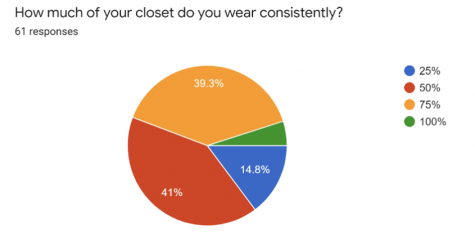
The issue with using a small percentage of your closet is that not only is it overcrowded, but the more people consume, the more the industry makes — a simple supply and demand curve.
For example, you might only wear one article of clothing one time, which wastes both the water that went into laundering it and the fabric that it’s composed of. A good solution to this issue is to donate (not throw out!) clothing you haven’t worn in the last six months and will not wear in the next six months.
Additionally, you might find it helpful to purchase clothing that is durable and slightly more expensive, rather than clothing that is cheaper and will likely not last as long. While it might be a higher cost upfront, purchasing more durable clothing means that you’ll achieve a lower cost per wear than you would with more flimsy articles.
If it’s the cost that deters you, purchasing lightly used clothing from stores like Goodwill, Savers, and Salvation Army will be much less expensive than your average H&M and will last much longer. The Amherst Goodwill offers 10% to students every Friday, as an incentive to reuse what already exists.
With the fast fashion ‘52 seasons a year’ culture comes an abundance of gently used clothing pouring into thrift stores. This outfit fit for the college party scene made up of mainstream brands acquired second hand.
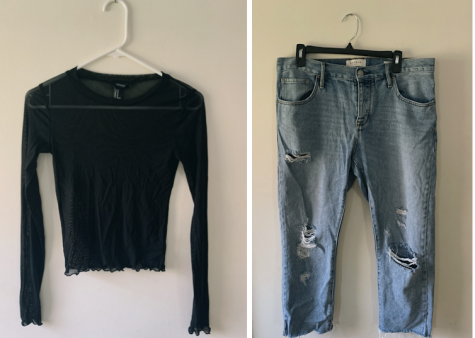
If it seems risky to purchase used clothing, talk to Cindy Bartels, the manager of the Goodwill. They receive buckets of used clothing every day, and she claims that a lot of the clothing coming into their store still has the tags on — brand new UGG boots and North Face jackets that have never been worn.
Yet, Goodwill Industries simply, “[sends] out a standardized price list to all the Goodwill stores and that’s [their] baseline for everything”. Those Nike shoes you’ve been looking at that cost $120? They could be found at your local Goodwill for under $10.
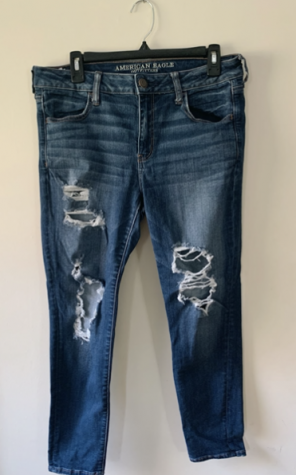
Regardless of your current habits when it comes to fashion, there’s always a way to be more environmentally conscious. Whether it’s donating to a local thrift store or simply purchasing less clothing, every decision you make impacts more than your wallet.
A company cannot survive without the financial support of the everyday consumer. When feeling powerless in one’s ability to make an impact it is important to remember that we enact change by deciding what we support financially and that it is the middle class that drives the market, not the top 1% on their own.
Bela Schultz, an alumni Environmental Sociology major, says she is very aware of the environment around her and cares deeply for it. She also acknowledges “it is very easy to forget about it and not prioritize it because climate change seems like such a distant problem”.
Shultz points out that thrifting is the viable shopping option for many people, not just environmental advocates. She began shopping second-hand eight years ago at the age of 15, with no clear aim other than accessibility.
Complete with a bigger selection than neighboring stores, Shultz notes that at Salvation Army you can find wackier, funkier items than the fast fashion industry offers.
“I also really love Urban Exchange,” she says about the consignment store located in Northampton. “It’s more curated which means it’s way more expensive, but if you’re willing to drop some money on something really good quality that will last you for a long time then that place is also really good.”
Some people don’t have the time, patience, or motivation to sift through racks of clothing to find something fitting. Not to mention, a lot of people have something specific in mind to buy.
Although slightly less sustainable because of packaging, shipping, and delivery, online thrift stores are still much more ethical than buying into the fast fashion industry. Shultz suggests looking on Poshmark or ThredUp for specific fashion needs.
“Investigate how your fashion and style can be a physical representation of your values and the world that you want to live in. Thrifting can be a way to do that as well as shopping at more sustainable new clothing brands, even though that is much more expensive, so that’s not as accessible to most people,” she said.
One thing we can all do is get educated. Find out where your clothing is coming from. Find out what types of organizations and initiatives these brands are connected to whether they be relative to sustainability, human rights, fair trade agreements, etc. The easily accessible app Good On You makes it very easy to find a company’s impact on the planet, people, and animals.
“Refram[e] how you think about style and fashion in a way that it isn’t about other people as much as it is about yourself and how you want to live,” Schultz said.
Email Chloe at costiguy@umass.edu
Email Melissa mmeltzer@umass.edu
If you have an idea for a future article in the series or would like to contribute, please email Emilee Klein at esklein@umass.edu or follow her on Twitter @emileeklein



